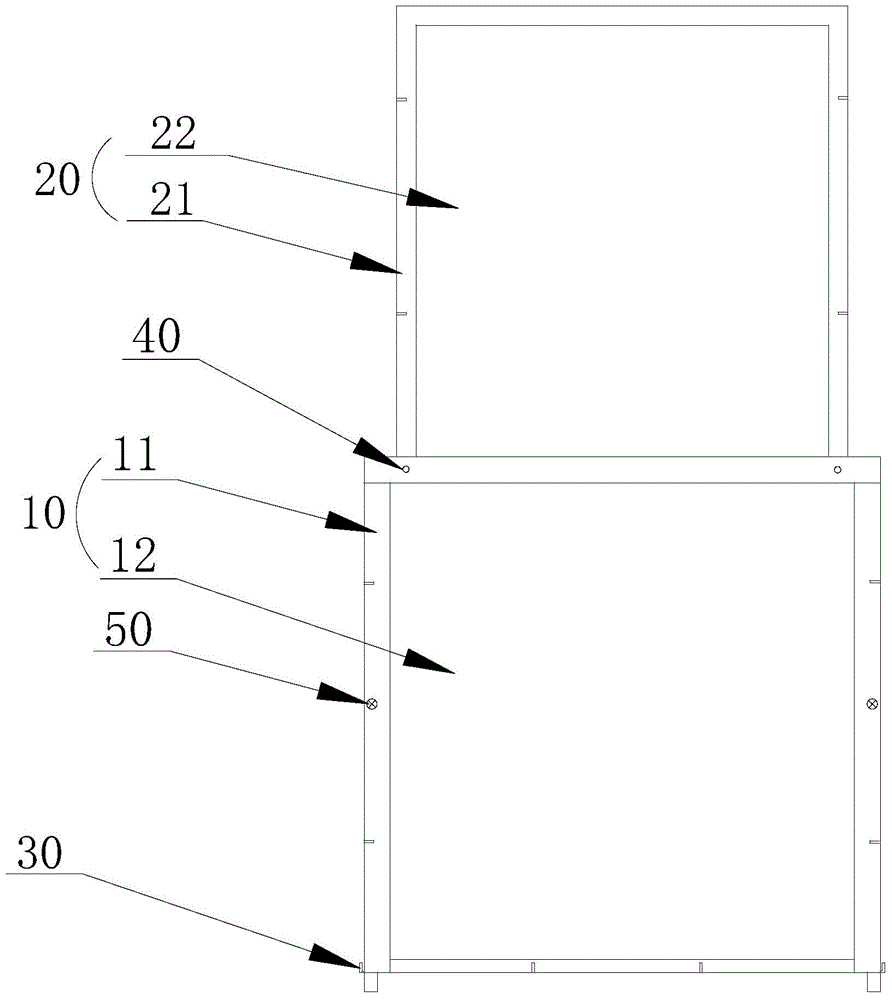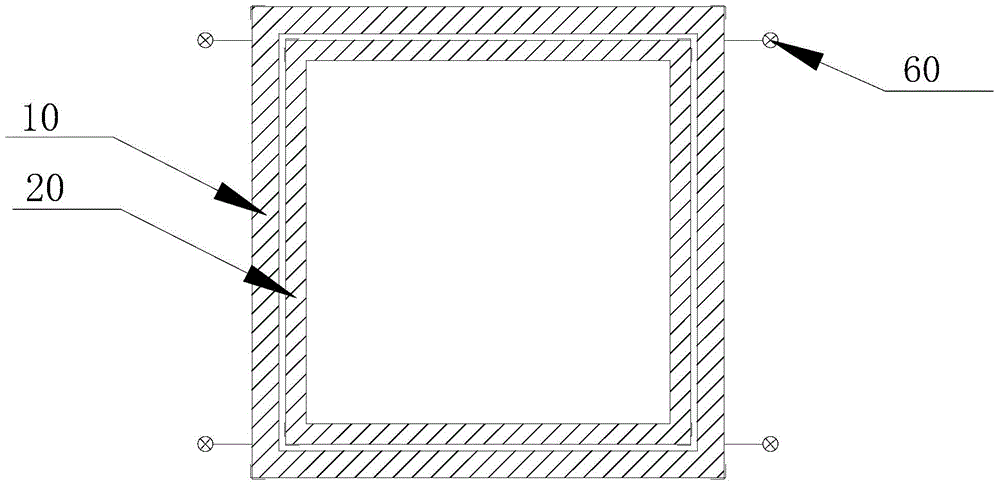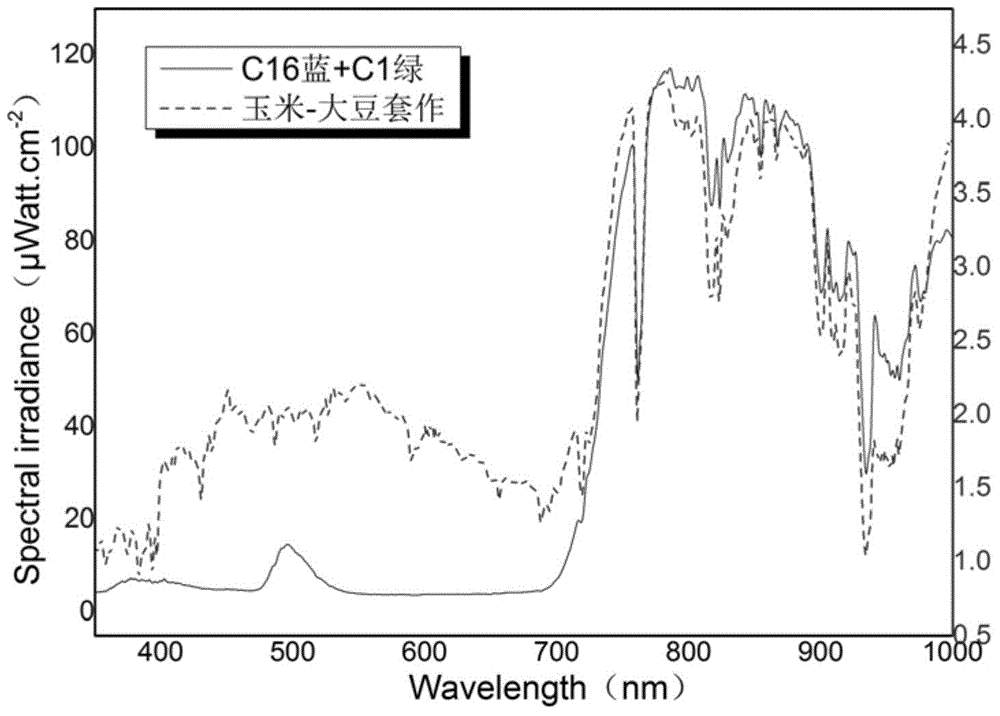Changeable spectrum cover suitable for small facility agriculture study and spectrum adjusting method thereof
An adjustment method and spectrum technology, applied in the field of plant research and experiment, can solve the problems of high site and facility cost, and achieve the effect of simple structure, easy management and space saving.
- Summary
- Abstract
- Description
- Claims
- Application Information
AI Technical Summary
Problems solved by technology
Method used
Image
Examples
example 1
[0036] Corn-soybean strip compound planting is one of the intercropping patterns that have developed extremely fast in agricultural production in recent years. In this pattern, soybeans are affected by the shading of high-level crops, resulting in changes in the light environment, and low-level crops soybean canopy. Compared with the light environment of net soybean canopy, the ratio of light quality has changed, which has a great impact on the growth and development, morphogenesis and metabolic process of soybean. The simulation of intercropping spectrum is an important prerequisite for the study of soybean physiological metabolism and gene expression under this model.
[0037] This example takes the aforementioned variable spectral mask for small facility agronomic research and uses it for light film adjustment and simulation. Taking the soybean canopy spectrum under the normal corn-soybean intercropping mode as the simulation target, a combination of different color filter ...
example 2
[0039] Plants contain different pigment systems, and different pigments can use light in different wavelength ranges, thereby affecting the growth and development of plants. Light in the wavelength range of 400-700nm is the main factor affecting plant photosynthesis and growth and development, among which red light (R) of 600-700nm can reduce the content of gibberellin in plants, thereby reducing the length of internodes and plant height; while 700nm The effect of ~800nm far-red light (FR) is just opposite to that of red light, which can increase the content of gibberellin in plants, thereby increasing the internode length and plant height. Therefore, the ratio of the luminous flux in the wavelength band centered on 660nm and 730nm, that is, the ratio of red light to far-red light (R / FR), represents the spectral parameter that has the greatest impact on plant photomorphogenesis.
[0040] This example adopts the above-mentioned variable spectral mask suitable for small-scale ...
example 3
[0046] In the study of multiple planting patterns such as corn-soybean, corn-peanut, corn-potato, sorghum-soybean, sugarcane-soybean, tobacco-soybean, etc., low-position crops (soybean, peanut, potato, etc.) are often affected by high-position crops (corn , sorghum, sugarcane, etc.) shading stress, leading to increased lodging and affecting yield and quality. Taking corn-soybean intercropping as an example, under the shady environment of intercropping, the shade-avoidance response will lead to the elongation of the internodes of cultivated soybean varieties, changing from erect to semi-erect or creeping, and eventually leading to lodging, the degree of which is affected by the light in the compound population. The impact of the environment, shading stress is different from weak light stress and light quality changes, which includes changes in light intensity and light quality. On the one hand, shading leads to a decrease in light intensity, and on the other hand, natural light ...
PUM
 Login to View More
Login to View More Abstract
Description
Claims
Application Information
 Login to View More
Login to View More - R&D
- Intellectual Property
- Life Sciences
- Materials
- Tech Scout
- Unparalleled Data Quality
- Higher Quality Content
- 60% Fewer Hallucinations
Browse by: Latest US Patents, China's latest patents, Technical Efficacy Thesaurus, Application Domain, Technology Topic, Popular Technical Reports.
© 2025 PatSnap. All rights reserved.Legal|Privacy policy|Modern Slavery Act Transparency Statement|Sitemap|About US| Contact US: help@patsnap.com



